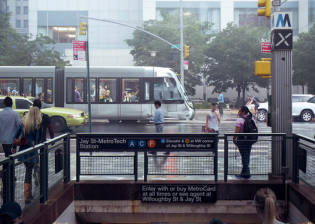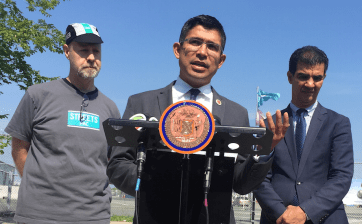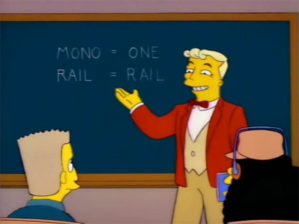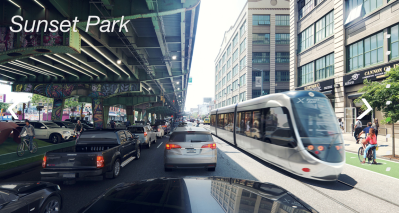EXCLUSIVE: Sunset Park Nixed From de Blasio’s Brooklyn-Queens Streetcar Fantasy
The city plans to unveil its proposed route for the BQX streetcar on Thursday.
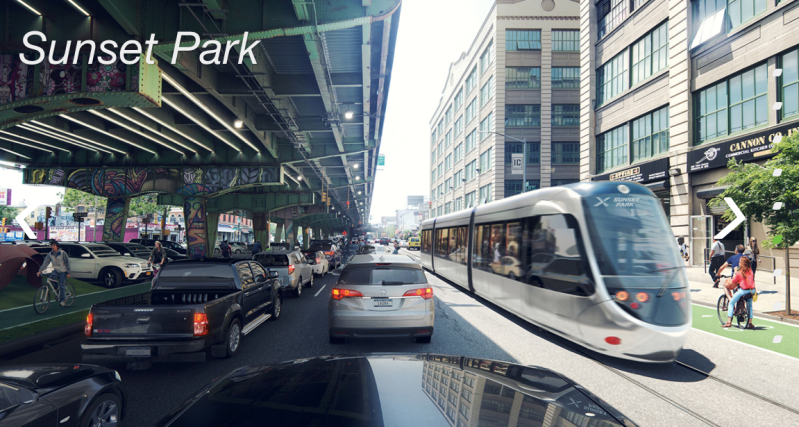
Mayor de Blasio’s proposed $2.7-billion BQX streetcar will begin its Brooklyn-to-Queens runs in Red Hook — not, as originally promised, in Sunset Park, a source briefed on the matter by city officials told Streetsblog.
The city plans to reveal the proposed route tomorrow, the source said. The mayor has changed the path significantly from previous renderings — but then again he has also abandoned the promise that the bus-on-rails would pay for itself through rising property values along the route.
From Red Hook, the streetcar would run along Columbia Street and into downtown Brooklyn on Willoughby Street, requiring the elimination of the Willoughby Street pedestrian plaza. From there, it would go north on Ashland Place past the Atlantic Terminal LIRR station and subway lines to Flushing Avenue. At that point, it may enter the Brooklyn Navy Yard at Clinton Avenue and exit onto Kent Avenue on its path to Williamsburg.
And in another noteworthy change, the city will not try to squeeze the streetcar onto the Pulaski Bridge, but will seek to build a new bridge connecting Manhattan Avenue in Greenpoint with Vernon Boulevard in Long Island City.

In Queens, the streetcar would travel on Vernon Boulevard, 44th Drive, and 21st Street, with the last stop at Astoria Boulevard. In all, it will cross seven subway lines — though it is unclear if customers get a free transfer to the MTA with their $2.75 fare.
The mayor initially said the then-$2.5 billion streetcar would “pay for itself” through an increase in property tax revenue from continued gentrification and other development spurred by the route’s creation. The cost estimate of the surface railroad line has increased to $2.73 billion. The “value capture” tax revenue will only cover about $1.3 billion of that, the source said. (Update: City Hall says value capture will cover $1.4 billion.)
Last week, de Blasio told reporters at a roundtable of Brooklyn community newspapers that the streetcar won’t be possible without support from the federal government — which is currently led by frequent de Blasio sparring partner, and mass transit foe, Donald Trump.
The timeline for the project has also changed, the source said: BQX boosters hoped construction would begin next year, it’s now slated to start in 2024 and wrap up in 2029.

The streetcar that nobody asked for is the brainchild of real estate developer Jed Walentas of Two Trees Management, whose real estate investments along the route would benefit from its construction.
The route would serve fewer than 40,000 people — in line with the city’s busiest bus routes, many of which are begging for upgrades that would cost far less money than the BQX.
It is unclear why Sunset Park was dropped from the route. Neighborhood group UPROSE strongly opposed the project, and Council Member Carlos Menchaca had wavered in his support. Then again, Michelle de la Uz of the Fifth Avenue Committee is a supporter.
The southernmost terminus was initially a big part of BQX supporters’ pitch to the public on the Friends of the Brooklyn Queens Connector website.
That website also stated, “The BQX is anticipated to cost approximately $2.5 billion to construct and approximately $30 million per year to operate and maintain. … The cost of construction could be covered by a bond issued against future tax revenue increases from commercial and multifamily properties along the BQX route. Based upon the impacts of transit on property values in similar conditions, this revenue is estimated to be well above the cost of constructing the BQX and will not rely upon any new residential rezonings or tax rate increases.”
That turned out to not be true, as the mayor has admitted.
“I don’t think it’s doable without federal support,” de Blasio told the Brooklyn reporters. “We believe there will be some real funding created by its presence, but we’re going to need some additional support.”
The BQX joins an entirely new ferry system as Mayor de Blasio’s mass transit effort. Critics have called both overly expensive and not as useful as beefing up existing bus and subway service.

